Nolo's Essential Guide to Buying Your First Home (91 page)
Read Nolo's Essential Guide to Buying Your First Home Online
Authors: Ilona Bray,Alayna Schroeder,Marcia Stewart
Tags: #Law, #Business & Economics, #House buying, #Property, #Real Estate

BOOK: Nolo's Essential Guide to Buying Your First Home
5.93Mb size Format: txt, pdf, ePub
Sample From Home Inspection Report, by Paul A. RudeROOF, GUTTERS, AND ATTICMy roof inspection is limited to a visual evaluation of the overall condition. I do not guarantee that the roof will not leak. Roof leaks are commonly due to defects that are concealed by the roofing surface. Identification of leaks typically requires testing or removal of roofing materials, which are beyond the scope of my inspection.RoofingThe roofing is of modified bitumen. This is a petroleum-based material applied in sheets sealed at the edges with heat. I used a ladder to reach the roof and walked on the surface.I was told that the roofing was installed about seven years ago, which is consistent with the appearance. It shows moderate wear. This type of roofing may last from 10 to 20 years, depending on environmental conditions and the quality of installation. I offer no warranty as to the remaining service life.The roofing is wrinkled and loose from the sheathing at the left front corner. This usually indicates an installation defect. These areas should be checked regularly in routine maintenance, and may need repair sooner than the rest of the roof.The roofing has a reflective coating to reduce deterioration due to sunlight. This coating is worn. I recommend that a qualified roofer apply a new coat. Depending on the material used, it will probably need to be renewed every few years to achieve the maximum useful life from the roofing. There are several trees near the roof. Plants touching the roofing can damage it, and leaves on the roof hold water, increasing the chance of leaks. I recommend that you keep trees and other plants trimmed away from the roof.All roofs require routine maintenance and occasional repairs. You should have a roofer examine the roof periodically and perform any repairs required to keep it waterproof and extend the service life. After initial repairs and maintenance, a maintenance check every two or three years should be adequate. As the roof ages, maintenance will be needed more often.FlashingsEdges, openings, and intersections in a roof should be protected by transition pieces called “flashings,” usually made of metal. Visible portions of the flashings appear to meet generally accepted standards. Much of the flashing material is concealed by the roofing, siding, and other surfaces.Part of the tile liner for a “patent” flue that once served a kitchen range has been removed at the rear. The metal shroud for the flue is still in place but it is not weatherproof; rain could blow into it, resulting in leaks. I recommend that a roofer modify it as needed to prevent leaks.Roof DrainageThe main roof has a single drain opening through the parapet wall to a downspout at the right rear. There is a second opening for the small roof area above the front porch.The drain opening is small and could easily be clogged with leaves. I recommend that it be cleared regularly as needed and the downspout flushed with a hose to ensure it is not clogged.Homeowners’ Insurance TerminologyHere’s a quick guide to some of the key terms you’ll encounter when dealing with homeowners’ insurance issues:•
Actual cash value.
A way of calculating how much damages an insured homeowner suffered that takes the replacement value of the damaged property and subtracts out depreciation, or the degree by which it has worn down from a new structure.•
Burglary and theft insurance.
A part of standard homeowners’ insurance, covering property losses due to burglary, robbery, or larceny.•
Deductible.
The amount of loss that you must pay for before your insurance company kicks in with coverage. The deductible may be calculated either as a specific dollar limit, a percentage of the amount of your claim, or an amount of time that must go by. The higher your deductible, the lower your premium.•
Earthquake insurance.
A special policy or endorsement that covers a building and its contents against earthquake damage. It usually comes with a large, percentage-based deductible. (Earthquakes aren’t covered by standard homeowners’ policies.)•
Endorsement.
A form that’s literally attached to your policy that changes or adds to its coverage, terms, or conditions. For example, you might buy an endorsement adding coverage for jewelry that’s worth more than your policy limits.•
Exclusion.
A statement in your policy explaining that your coverage doesn’t include certain specified risks, people, types of property, or locations.•
Extended replacement cost coverage.
See “Replacement cost coverage,” below.•
Flood insurance.
Flood damage isn’t covered by standard homeowners’ policies, but coverage is available from the federal government’s National Flood Insurance Program (“NFIP”). You can access it through licensed insurance agents.•
Guaranteed replacement cost coverage.
This hard-to-find coverage offers you payment for the entire cost of replacing or repairing your damaged or destroyed home.•
Homeowners’ insurance.
This is actually what’s known as a “package policy,” because it combines several types of coverage. Your house, garage, and other structures, as well as your personal possessions within the house (such as furniture, appliances, and clothing), are covered against such hazards as fire, wind, and theft. Your living expenses are covered if you have to wait for the house to be rebuilt after a disaster. And most policies also include a liability portion, covering you for the medical costs and other damages to people who are accidentally injured or have their own property damaged while at your house or on your property or by members of your household.•
Hazard insurance.
The portion of your homeowner’s policy dealing with physical damage to your house and property, rather than your liability for others’ injuries.•
Inflation guard.
A clause that you can add to your homeowners’ policy saying that each time the policy is renewed, you’ll get an automatic raise to the payment limit for construction costs. The idea, as the name suggests, is to track inflation—but since the percentage is set in advance, it doesn’t necessarily do so accurately.•
Liability insurance.
If someone from outside your household comes to your property and suffers accidental bodily injury or property damage, this covers the injured person’s medical bills and your legal obligations if you’re sued. (If you intentionally or recklessly cause the person harm, however, there’s no coverage.)•
Loss of use coverage.
A policy provision that pays you back for the cost of living elsewhere while your house is being restored after a disaster (minus the amount you would have spent to live at home).•
Premium.
The amount you pay to your insurance company, usually once a year, in order to buy and maintain your coverage.•
Replacement cost coverage.
Unlike guaranteed replacement cost coverage, ordinary replacement cost coverage places a dollar limit on the amount you’ll receive to replace your damaged personal property or dwelling (with no deduction for depreciation). For a slightly better deal, you can get “extended replacement cost coverage,” which pays a certain amount above the policy limit, usually 120% or 125%.•
Ordinance or law coverage.
An endorsement to your homeowners’ policy that pays for extra rebuilding expenses caused by your need to comply with ordinances or laws, often building codes, that didn’t exist when your house was first built. A common example is that old copper wiring may need to be updated to whatever material the current law requires.
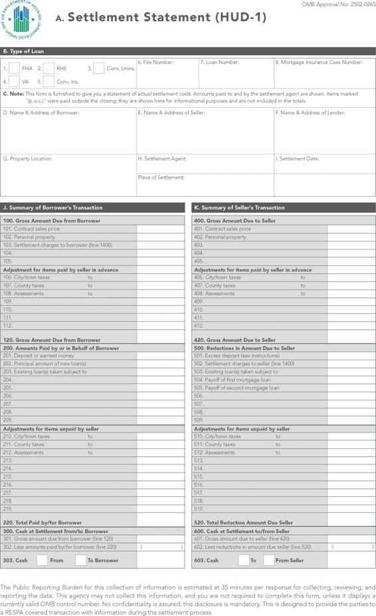
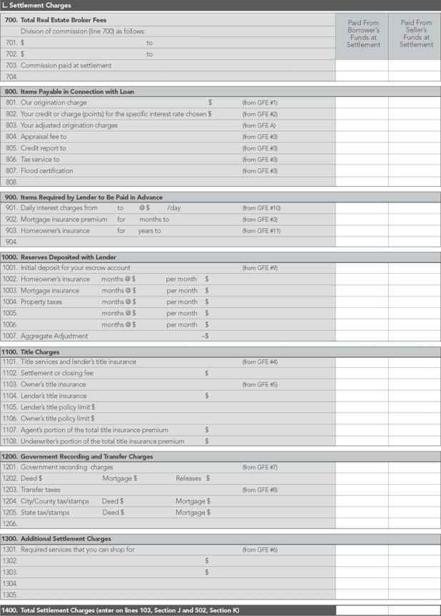
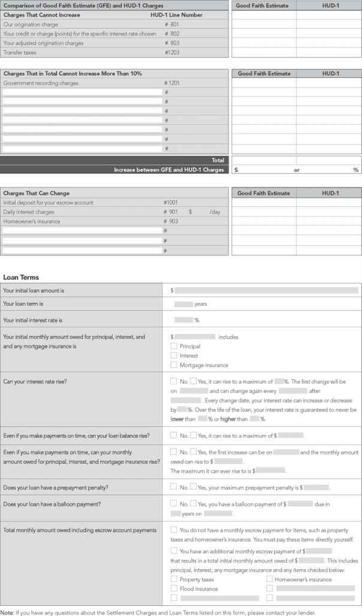
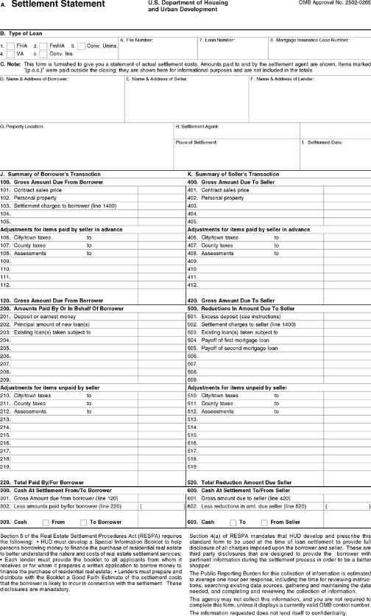
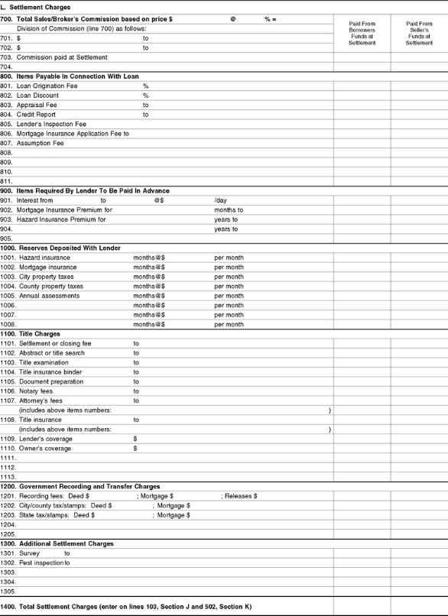
Final Walk-Through Checklist (Existing Home)Use this checklist to walk through the house and make sure everything is in good order or repair. You’ll want to make sure that the seller has made any agreed-upon repairs, left behind all fixtures or other agreed-upon property, and left the place clean and trash-free. Add any other relevant items (inside and outside) or questions you may have (such as the name of the architect who did a recent kitchen remodel) to the list. Note any problems and try to work them out with the seller before the closing. If the seller agrees to do additional work or repairs, be sure to get the details in writing, including how the costs will be paid.The keys fit in the locks, keys have been provided for every door, and you know how to use them.
The lights and fans work when you turn switches on and off.
The doorbell rings.
The alarm or security system works, and the seller has left the company’s contact information and any entry codes and remotes.
The faucets turn on, no leaks are evident under or around the sinks, and all toilets flush.
The stove, oven, refrigerator, garbage disposal, dishwasher, microwave, and other appliances work.
The garage door opener works, and the seller has left the remote.
The ceilings, wall, and floors are in the condition you expected.
The heating and air conditioning work.
The windows all open and close.
The sump pump, if there is one, works (to turn it on, you’ll normally need to fill the pit with water).
None of the seller’s trash or personal items remain in the house, garage, attic, basement, yard, or refrigerator.
The seller has left you any brochures or warranties regarding the furnace, appliances, and other fixtures.
Other books
Dirty Secrets by Drummond, Lonaire
Homeland by R. A. Salvatore
Among the Chaos: Book 2 of the Soldiers of Chaos MC Series by A.A. Askevold
Infraction by Oldham, Annie
La séptima mujer by Frederique Molay
A House for Mr. Biswas by V.S. Naipaul
Black Wolfe's Mate (Paranormal Shifter Romance) by Avelyn McCrae
Bay of Souls by Robert Stone
The Secret Life of Salvador Dali by Salvador Dali
Her Big Bad Mistake by Hazel Gower